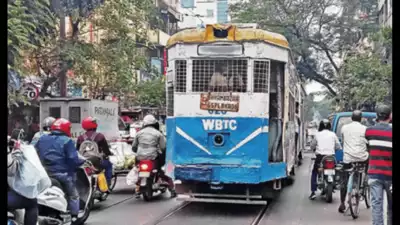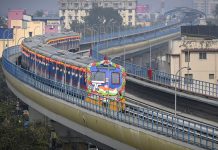Kolkata Trams is India’s only tram network. Founded in 1873, this system has a history of more than 150 years and is designated as a cultural heritage site. Find out everything about Kolkata trams in this blog!
Kolkata’s trams are the very first electric vehicles and serve as the lifeline of the city. Learn more about this iconic mode of transportation, routes, fares, and more.

source: Times of India
A true metropolis, Kolkata is a land of opportunity and culture. Kolkata, the capital of West Bengal, offers numerous employment opportunities and is home to over 4.5 million residents. One of the most iconic experiences you can have in this city is riding the Kolkata tram. No tourist leaves the city without using at least one of the tram lines that run through Calcutta. Currently, West Bengal Transport Corporation (WBTC) maintains Kolkata’s tram fleet. The city’s tram is a cultural symbol in the process of obtaining cultural heritage designation. The city has six tram lines, each connecting different parts of Kolkata.
To see the list of tram routes:https://www.calcuttatramways.com/tram-route-search/
These connected all corners of the city and were the main means of transportation. Tram services were gradually replaced by buses and other expressways, the CTC was disbanded and the West Bengal Transport Corporation (WBTC) took over the tram network.
As of 2023, six tram lines are operating in Kolkata, the Calcutta tram route map shows, that tram lines run through the city, with the westernmost stop being Tallganj on route 24/29. The easternmost stop is Shanbazar on National Highway 5. The pink route (Route 24/29) is somewhat different from his other five routes.
Interchange points and Timings
All other routes have at least one transfer point. College Street Junction Station is a central transfer point for Lines 11, 18, and 5. In Kolkata, you can easily change your route by taking a tram on any of these three lines and getting off at College Street Junction station. Kolkata tram stop Kolkata’s trams run daily and passengers can board from 4:30 am to 10:45 pm. This is the default timing for all 6 lines. The average tram frequency is approximately 20-25 minutes throughout the day.
Although these trams run on roads and are relatively slow, they are the perfect mode of transportation if you want to enjoy the best of Kolkata during your trip.
Tram fares:
The fares on the Horcata tram are very cheap. Ticket prices for non-AC trams range from INR 5 to INR 10, irrespective of which route you take. Before 2013, Kolkata trams had two classes: first class and ordinary passenger class. However, since 2013, the classes have been abolished, and all buses have the same appearance and ticket prices. Fares for AC Trams and Heritage Trams are different. Monthly passes and day passes are also available. The tram can be rented not only for movie shoots, but also for various celebrations such as amusement parks, birthday parties, and weddings. During peak hours of the day, a women-only tram will run between Cheyenne Bazaar and Kidderpore via BBD Bag and Esplanade.
Frequently Asked Questions:
Kolkata’s trams are the only operational tram network in India, with over 150 years of history! They’re a cultural icon and a slow, scenic way to explore the city.
The West Bengal Transport Corporation (WBTC) maintains the trams. You can find a detailed tram route map and search for specific routes at
Fares are super affordable! Expect to pay between ₹5 and ₹10 for a non-AC tram ride, regardless of the route.





































